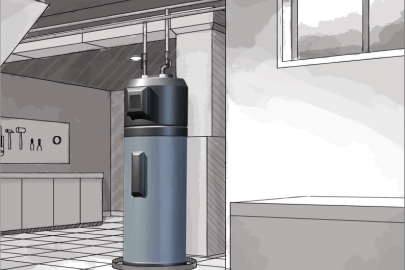Just how do you feel about Tips For Maintaining Your Hot Water Heater?

Warm water is crucial for daily convenience, whether it's for a rejuvenating shower or cleaning dishes. To guarantee your warm water system runs effectively and lasts much longer, regular upkeep is essential. This write-up supplies practical ideas and insights on just how to maintain your home's warm water system to avoid disturbances and pricey repairs.
Introduction
Keeping your home's warm water system may seem daunting, however with a couple of easy steps, you can ensure it runs smoothly for several years to come. This overview covers everything from recognizing your warm water system to DIY maintenance suggestions and understanding when to hire specialist help.
Relevance of Maintaining Your Warm Water System
Normal maintenance not just expands the lifespan of your warm water system yet also ensures it operates efficiently. Overlooking maintenance can lead to lowered performance, greater power costs, and even premature failure of the system.
Signs Your Warm Water System Demands Upkeep
Recognizing when your warm water system needs focus can avoid major problems. Watch out for signs such as inconsistent water temperature, unusual noises from the heater, or rusty water.
Understanding Your Hot Water System
Before diving into maintenance jobs, it's helpful to recognize the fundamental components of your hot water system. Typically, this consists of the hot water heater itself, pipes, anode rods, and temperature level controls.
Month-to-month Maintenance Tasks
Regular monthly checks can help capture small problems before they escalate.
Flushing the Hot Water Heater
Flushing your water heater removes debris build-up, improving performance and lengthening its life.
Monitoring and Replacing Anode Rods
Anode rods prevent deterioration inside the container. Checking and replacing them when worn out is critical.
Evaluating and Changing Temperature Setups
Changing the temperature setups guarantees optimum efficiency and safety.
DIY Tips for Upkeep
You can carry out several upkeep jobs yourself to maintain your warm water system in top problem.
Looking for Leakages
On a regular basis examine pipes and links for leakages, as these can cause water damage and greater expenses.
Checking Pressure Alleviation Valves
Checking the pressure safety valve ensures it functions properly and prevents excessive stress buildup.
Insulating Pipelines
Protecting hot water pipelines reduces warmth loss and can conserve energy.
When to Call a Professional
While do it yourself maintenance is advantageous, some issues call for professional proficiency.
Facility Problems Requiring Specialist Aid
Examples consist of significant leaks, electric issues, or if your hot water heater is regularly underperforming.
Routine Professional Upkeep Perks
Professional maintenance can consist of complete inspections, tune-ups, and making certain compliance with security requirements.
Conclusion
Regular upkeep of your home's hot water system is essential for performance, long life, and expense savings. By adhering to these pointers and understanding when to look for professional aid, you can guarantee a trusted supply of hot water without unforeseen disturbances.
How to Maintain an Instant Hot Water Heater
Before tinkering with your hot water heater, make sure that it’s not powered on. You also have to turn off the main circuit breaker and shut off the main gas line to prevent accidents. Also turn off the water valves connected to your unit to prevent water from flowing into and out of the appliance. 2. When you’re done, you have to detach the purge valves’ caps. These look like the letter “T” and are situated on either side of the water valves. Doing so will release any pressure that has accumulated inside the valves while at the same time avoid hot water from shooting out and burning your skin. 3. When the purge valves’ caps are removed, you have to connect your hosing lines to the valves. Your unit should have come with three hoses but if it didn’t, you can purchase these things from any hardware or home repair shops. You can also get them from retail stores that sell water heating systems. Read the user’s manual and follow it to complete this task properly. When the hosing lines are connected, open the purge port’s valves. 4. You should never use harsh chemical cleaners or solutions when cleaning your unit. Make use of white vinegar instead. It should be undiluted and you’ll probably use about 2 gallons. 5. Now flush your water heater. This task should probably take about 40 minutes. We can’t give you specific directions for this because the procedure is carried out depending on the type, model and brand of your heater. With that being said, refer to the user’s manual. 6. When you’re done draining the unit, you have to turn off the purge port valves again. Remove the hosing lines that you earlier installed on each of the water valves. Put the valve caps (purge port) back in their respective places and be very careful so as not to damage the rubber discs that are found inside these caps. 7. Now that everything’s back in place, check your user’s manual again to find out how to reactivate your water heating system. 8. Once it is working, turn one of your hot water faucets on just to let air pass through the heater’s water supply pipes. Leave the tap on until water flows smoothly out of it. https://www.orrplumbing.com/blog/2014/september/how-to-maintain-an-instant-hot-water-heater/

Do you really like reading up on Water Heater Maintenance Tips You Can't Afford to Forget? Make a remark below. We would be pleased to know your thoughts about this entry. In hopes to see you back again in the near future. Those who appreciated our blog post please be sure to pass it around. Thank you so much for your time spent reading it.
Course Detail
 Jake Lloyd Then & Now!
Jake Lloyd Then & Now! Jenna Jameson Then & Now!
Jenna Jameson Then & Now! Gia Lopez Then & Now!
Gia Lopez Then & Now! Sam Woods Then & Now!
Sam Woods Then & Now! Dawn Wells Then & Now!
Dawn Wells Then & Now!